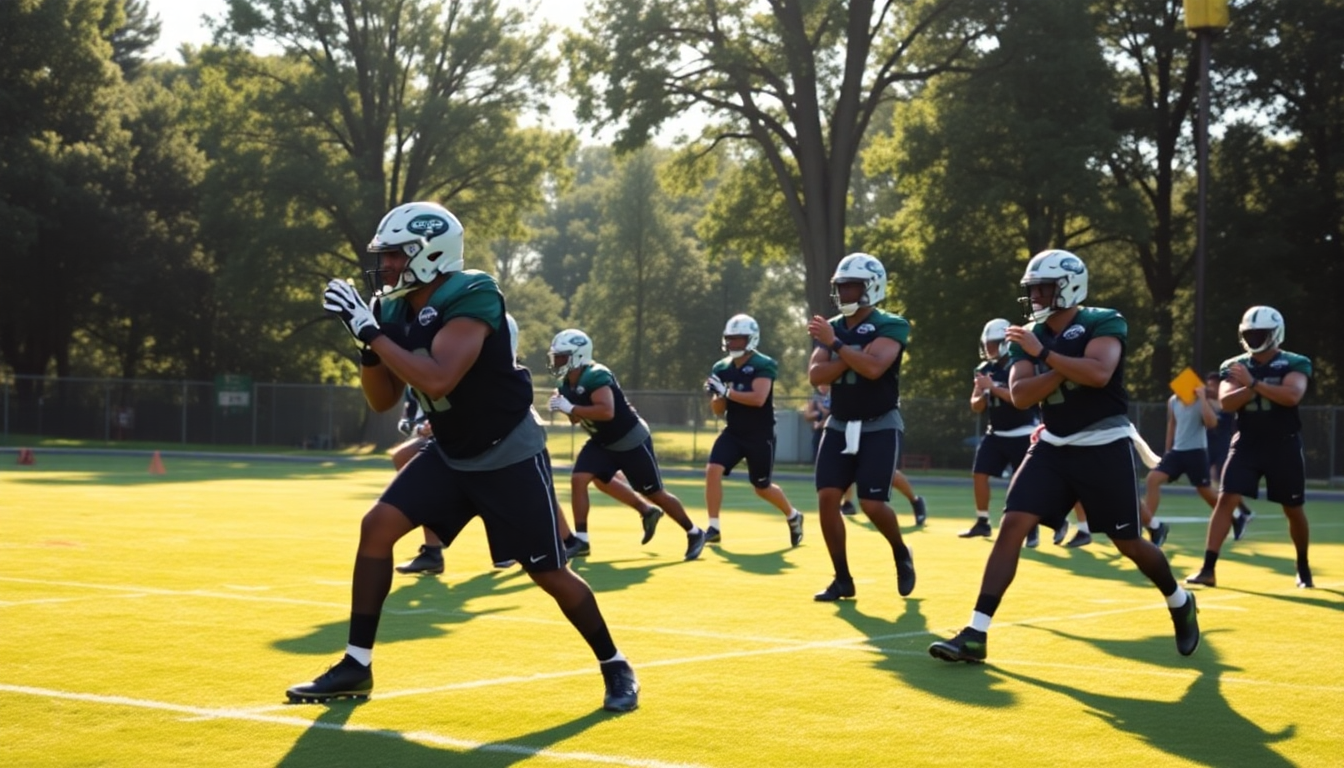Table of Contents
The start of NFL training camps often sparks a wave of excitement, especially when players strap on their pads for the first time. This moment is more than just a formality; it’s a crucial sign of how ready a team is for the season ahead. The Jets, under the guidance of Aaron Glenn, are shaking things up this year with a more **physical training approach**. This isn’t just about being tough; it’s a strategic move to build a strong identity for the team.
Analyzing the Jets’ Shift in Training Philosophy
The Jets have made a noticeable shift in their training sessions, breaking away from the typical routine. On their first day in pads, players dove into one-on-one drills, really getting into tackling and pass rush techniques. This throwback style is reminiscent of former coach Rex Ryan, who was famous for instilling a fierce physicality in his teams. In a time when many coaches focus on minimizing injuries, Glenn’s choice to incorporate intense physical drills is both bold and a testament to his commitment to developing a capable, tough team.
Glenn’s approach is grounded in the reality that injuries are part of football. He challenges the common belief that avoiding contact in practice leads to fewer injuries. As he puts it, keeping players away from the game’s realities can sometimes backfire, resulting in unexpected injuries. Instead, he stresses the importance of honing fundamental skills—like running, blocking, and tackling—to adequately prepare players for the demands of the game.
His philosophy is clear: to get better, players need to practice these essential skills repeatedly. While the Jets won’t tackle in every practice, they’ll create opportunities for physical drills, reinforcing the idea that preparation is key to success. This commitment to a more physical training regimen has been well received by the players, who are eager for the chance to engage in more intense drills.
Player Reactions and Support for the New Approach
Feedback from the players has been overwhelmingly positive. Braelon Allen, a second-year running back, expressed his excitement about the one-on-one drills, noting that it felt like a welcome return to the physicality he experienced in high school. He understands the necessity of experiencing tackles to sharpen his skills, showing a genuine desire to improve. Similarly, Xavier Gipson, a third-year wide receiver, emphasized the thrill of wearing pads again, highlighting the team’s eagerness to embrace this physical training style.
This shared enthusiasm among the players reflects their understanding of Glenn’s philosophy. They see that engaging in high-intensity drills not only prepares them physically but also fosters camaraderie and a competitive edge within the team. Glenn’s strategy aims to instill this physical mentality deep into the team culture, a factor that could be pivotal for their performance this season.
Looking Ahead: Balancing Risks and Rewards
While the initial feedback is promising, the true test of Glenn’s approach will unfold as the season progresses. Injuries can easily disrupt any team’s rhythm, and if the Jets encounter significant injuries due to their rigorous training, the spotlight will be on Glenn. Nevertheless, he remains firm in his belief that the rewards of a physically demanding practice outweigh the risks. By preparing players for the physical challenges they’ll face in games, he hopes to build a more resilient and competitive squad.
As the NFL continues to evolve, the conversation around player safety versus effective training practices remains crucial. Glenn’s approach could set a new standard for how teams ready their players for the season’s challenges. Open dialogue about player safety, while fostering a culture of toughness, will be essential as they navigate the season ahead.


